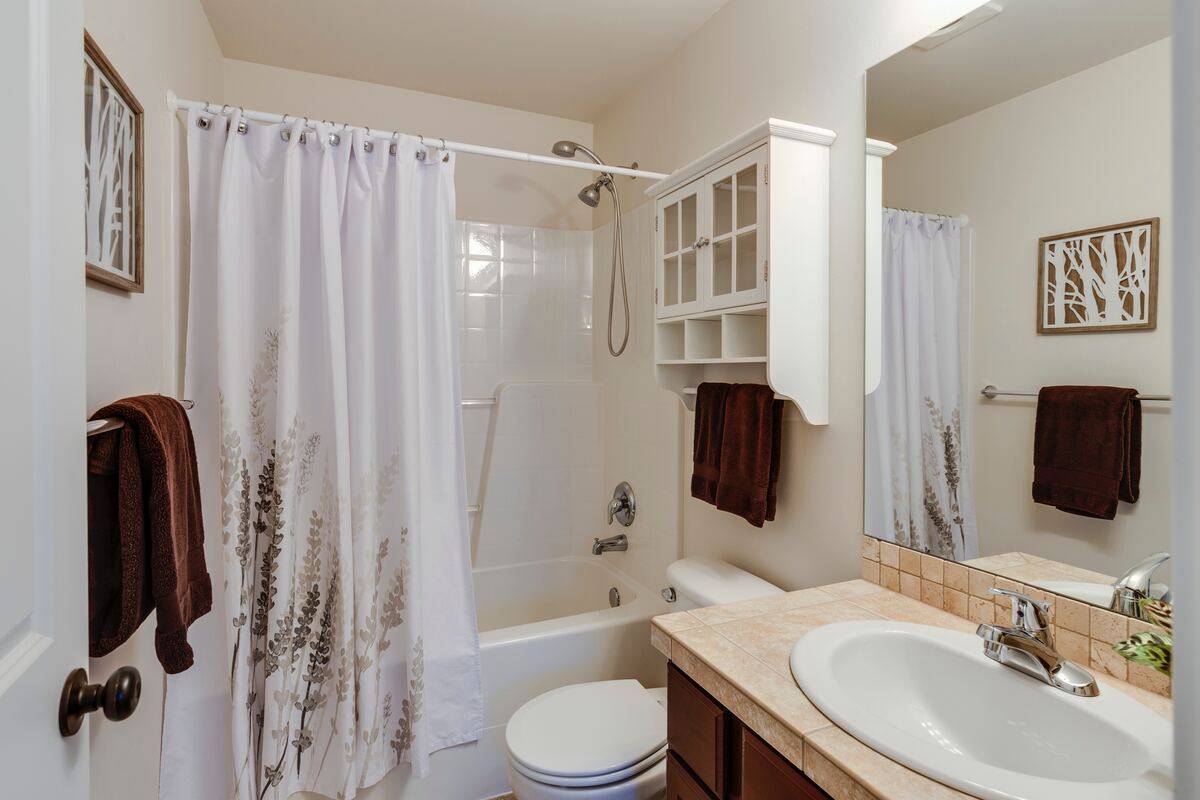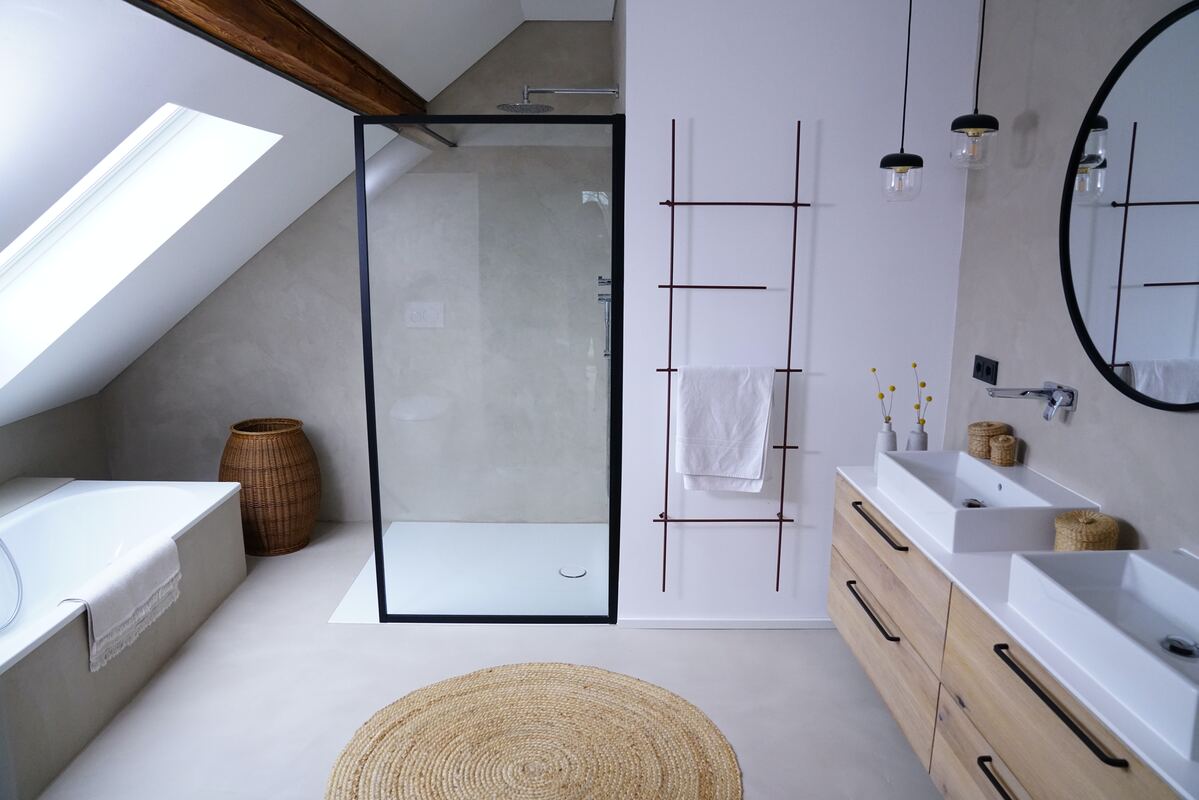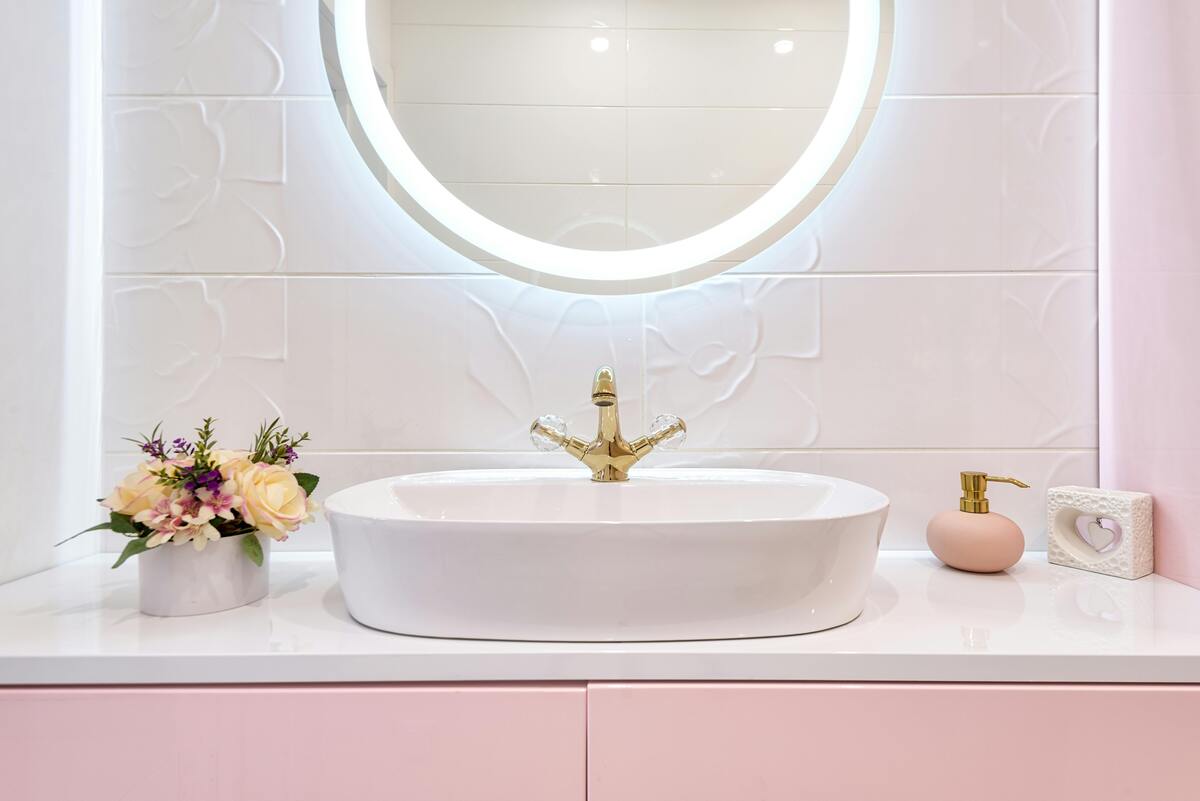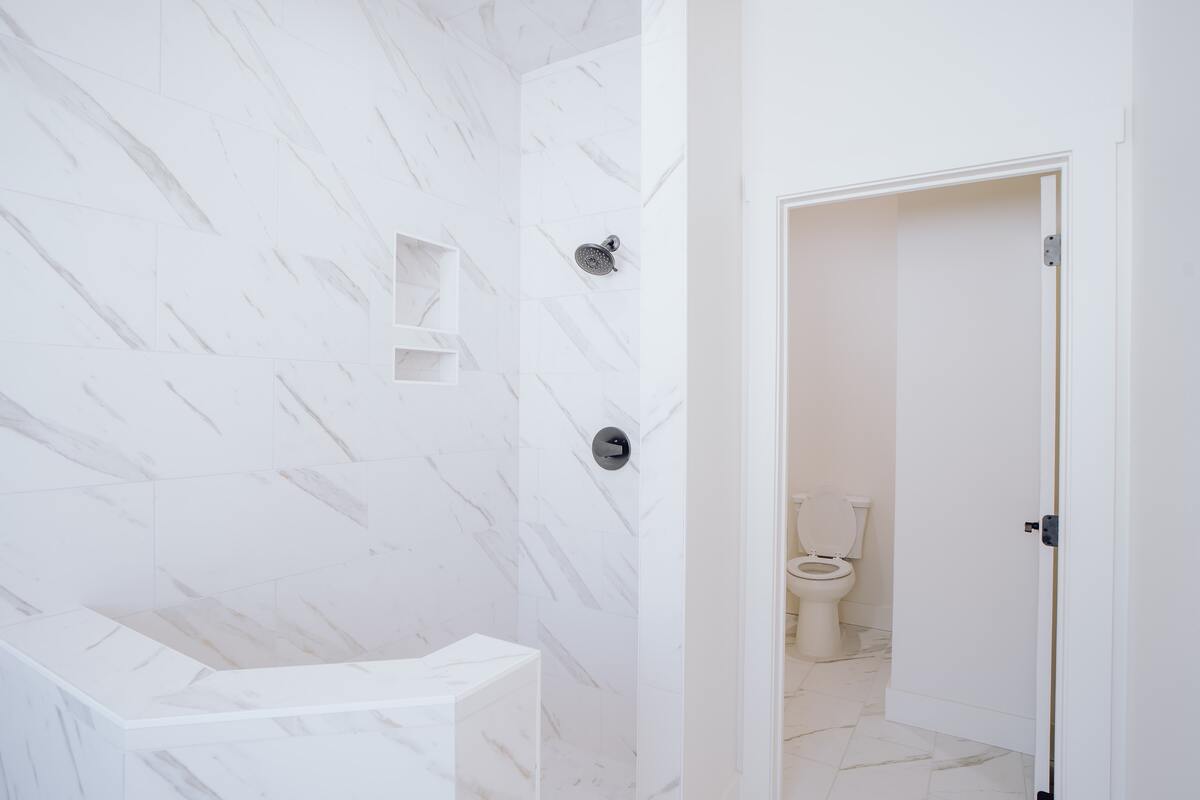Small Bathroom Layouts: Our Guide

When designing and installing a small bathroom, the layout is of utmost importance.
A well-thought-out small bathroom layout can make the most of limited space, maximise functionality and create a visually appealing, comfortable environment.
In this blog, our bathroom design experts share various small bathroom layout options, design considerations and tips. These will help you transform a compact bathroom into a functional, stylish feature room.
Small bathroom layouts and making the most of limited space
Small bathrooms present a unique set of challenges and opportunities when it comes to design and layout.
Unlike larger bathrooms, where you have more freedom to experiment with different fixtures and layouts, small bathrooms require careful planning to make the best use of the available space.
Here are some popular small bathroom layouts to consider:
1. The One-Wall Layout
The one-wall layout, also known as the single-wall layout, is a popular choice for extremely small bathrooms. In this layout, all bathroom fixtures, such as the toilet, sink, and shower or bathtub, are arranged along a single wall. This design is efficient and keeps everything within easy reach, making it a practical choice for tight spaces.
2. The Corner Layout
In a small bathroom, using corners – for example, with a corner shower – is a great strategy to save space. The corner layout places fixtures like the toilet, sink, bathtub or standard sized shower tray in separate corners of the room. This arrangement can optimise and save floor space and can create a visually open and airy feel in your bathroom.
3. The Galley Layout
The galley layout is reminiscent of the layout in a narrow kitchen. In this design, fixtures are placed on either side in narrow bathrooms, creating a corridor-like feel. This layout works well for bathrooms with limited width but greater length. It’s an excellent choice for creating a sleek and organised look.
4. The L-Shaped Layout
The L-shaped layout combines fixtures along two adjacent walls, forming an “L” shape. This layout provides a more open and flexible feel compared to the one-wall layout. It’s a great option for small bathrooms that have a corner to work with. The L-shaped design allows for a spacious shower enclosure or bathtub while keeping the sink and toilet within easy reach.
5. The Wet Room Layout
Increasingly popular, a wet room layout is a modern and minimalist approach to small bathroom design. In a wet room, the entire bathroom functions as a shower area, typically with a central floor drain. With wet room panels and flooring, there’s no need for a shower curtain if you don’t want one! Wet rooms are perfect for extremely compact spaces where you want to maximise the use of every inch. It offers a clean, open, and spa-style bathroom atmosphere.
Design considerations for small bathroom layouts
Now that we’ve explored various space-limited bathroom layouts, let’s dive into some important design considerations to keep in mind as you plan your small bathroom renovation.
In small bathrooms, functionality is paramount. Every design decision should revolve around making the best use of available extra space. Consider fixtures that serve multiple purposes, like a custom walk-in shower or one with built-in storage shelves.
Choose space-saving fixtures and fittings designed specifically for small bathrooms.
A wall-mounted sink and wall-hung toilet, compact vanities, and narrow showers are excellent choices.
These fixtures can make a significant difference in creating a more open and uncluttered environment. Generally, a minimalist approach is most appropriate for a narrow small bathroom layout.
Small bathrooms often lack floor space but typically have plenty of unused vertical space.
In addition to a wall-mounted toilet, wall-mounted cabinets, shelves, and towel racks keep essentials organised and within easy reach. Floating vanities can also create a sense of openness by exposing more of the floor, so they’re a great wall-hung storage option.
For more bathroom design considerations, don’t forget to take a look at our blog.
Lighting at the forefront of bathroom layouts
Proper lighting is particularly crucial in a small bathroom.
Natural light, when available, can make the compact space feel larger and more inviting. If natural light is limited, install bright, energy-efficient LED lighting to ensure a well-lit and welcoming atmosphere.
Opt for light colour schemes in your small bathroom design. Light colours, such as soft blues, greens, or neutral tones, can visually expand or maximise space and create a sense of airiness.
Consider using similar shades on the walls and fixtures to maintain a cohesive look. Don’t discount the impact mirrors and reflective surfaces can have on enhancing the sense of space in a small bathroom.
Different wall features such as a large mirror above the sink or a mirrored medicine cabinet can make the room feel more open. Reflective tiles or glass shower enclosures can also contribute to this effect.
Other tips for making the most of your small bathroom layout
Now that you have a better understanding of small bathroom layouts and design considerations, here are some additional tips to help you make the most of your limited space.
Before starting any renovation, carefully plan your layout and measure your bathroom dimensions. This will help you make informed decisions about which fixtures and design elements will work best in your space.
When it comes to fixtures in a small bathroom, every detail matters. Well-designed fixtures become focal points – take time and care in your selection.
Note that scale is crucial in small bathroom design. Ensure that your fixtures and accessories are appropriately sized for the room.
Enhance the positive effect of your fixture choices by opting for tiles and paint that match or complement each other. A cohesive colour scheme can create a harmonious and visually-spacious look.
Consider adding concealed storage solutions to keep your small bathroom suite tidy. Built-in niches, recessed medicine cabinets, and hidden shelving can provide ample storage space without cluttering the room.
Additionally, if you’re using a swinging bathroom door, think about the direction it opens. An outward-swinging door can help create a more open feel in a small bathroom.
Final thoughts – small bathroom layouts
Designing and installing a small bathroom layout requires careful planning, creativity and attention to detail.
And did you know that there are set standards in the UK around what must feature in different types of bathrooms? No matter how small they are, any new development should factor in minimum housing standards.
This guide covers some of the key elements to creating your ideal bathroom – but expert consultation is always advised.
If you’re unsure about the layout or design decisions, get in touch with the friendly Ability Bathe team for a no-obligation chat. We can provide expert advice, helping you make the most of your small bathroom space – we hope to hear from you soon!





